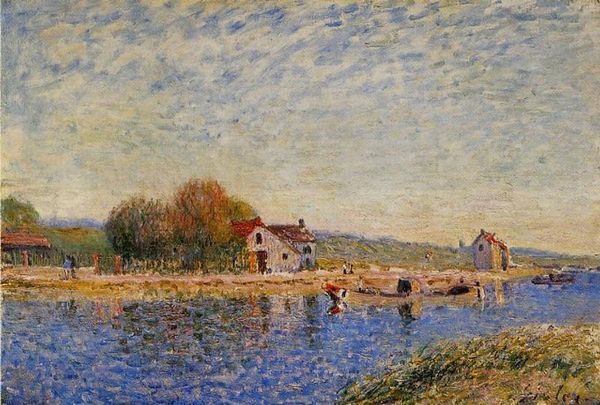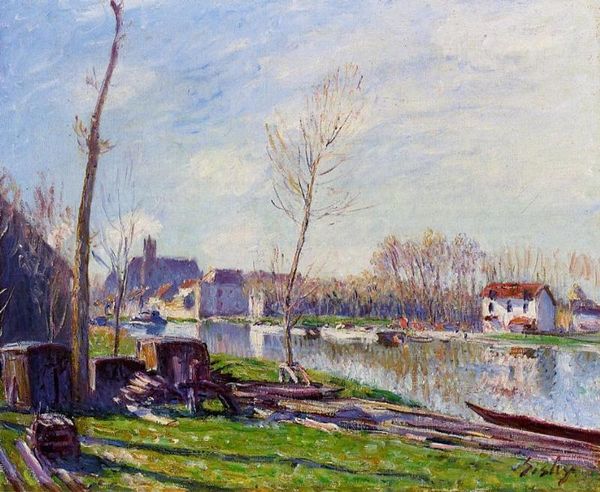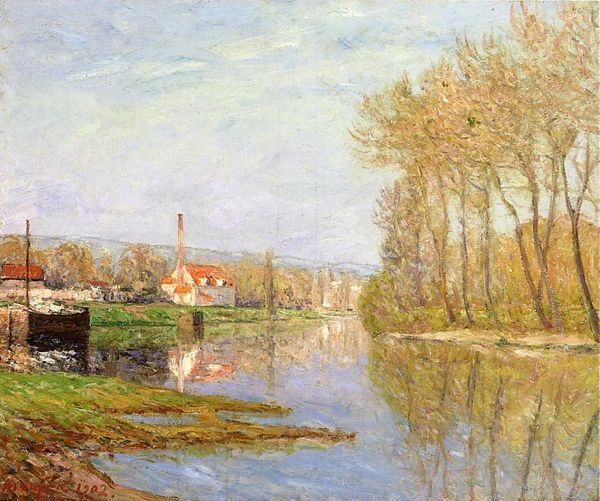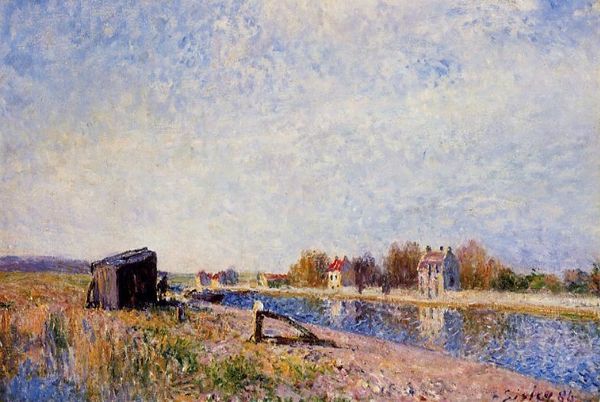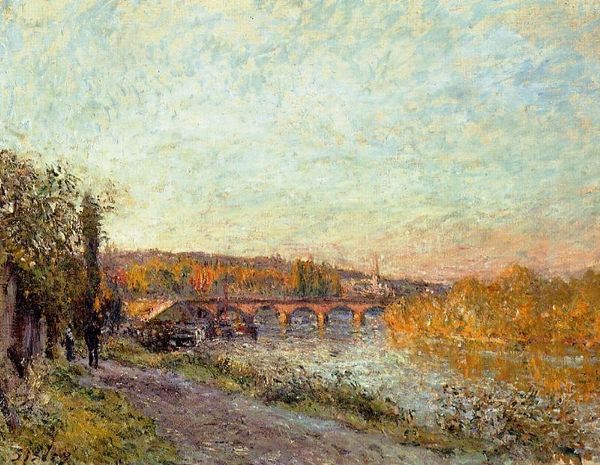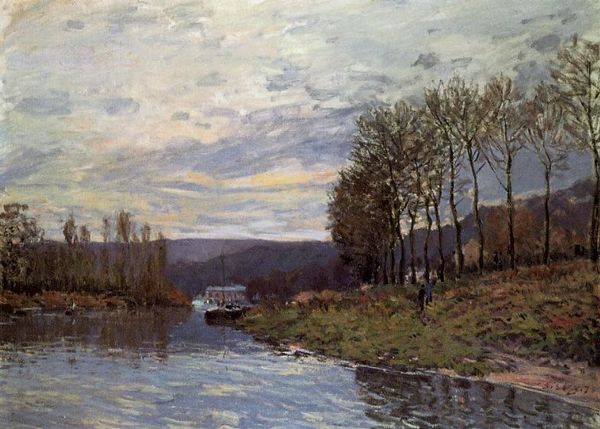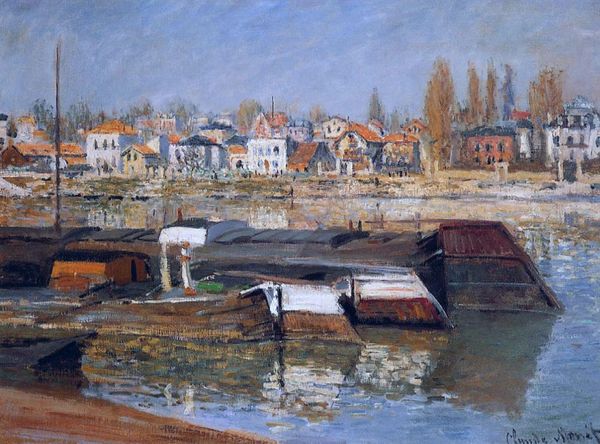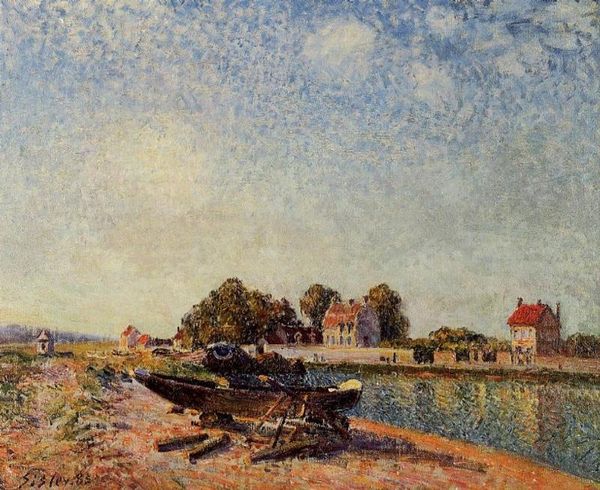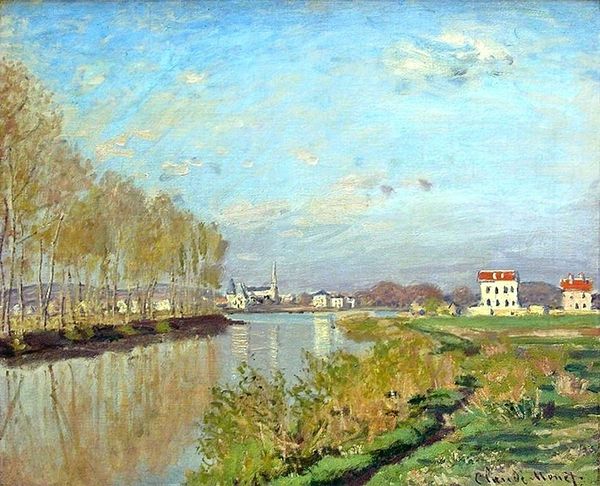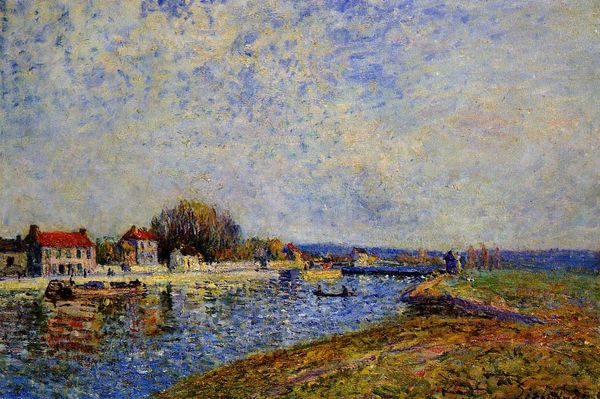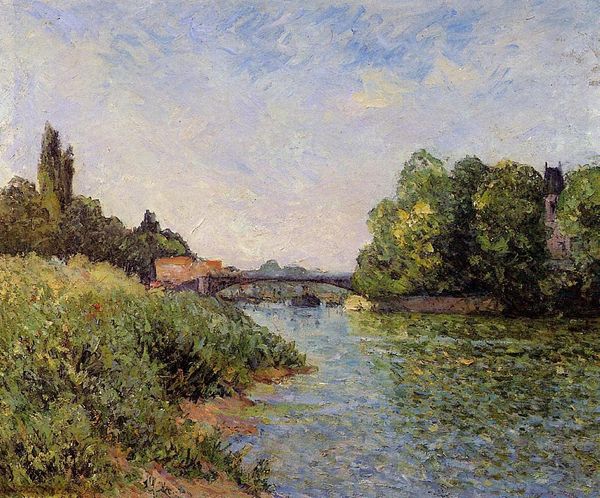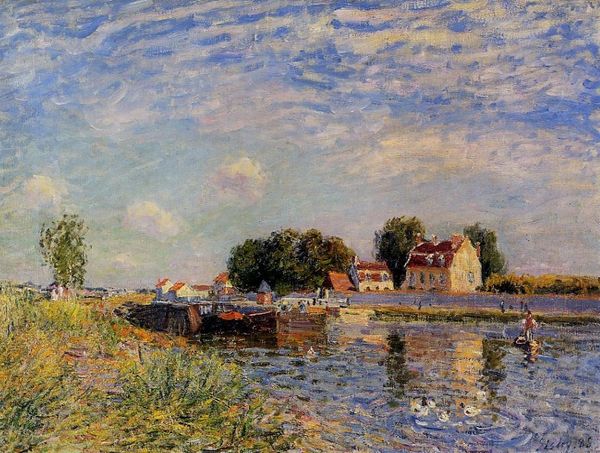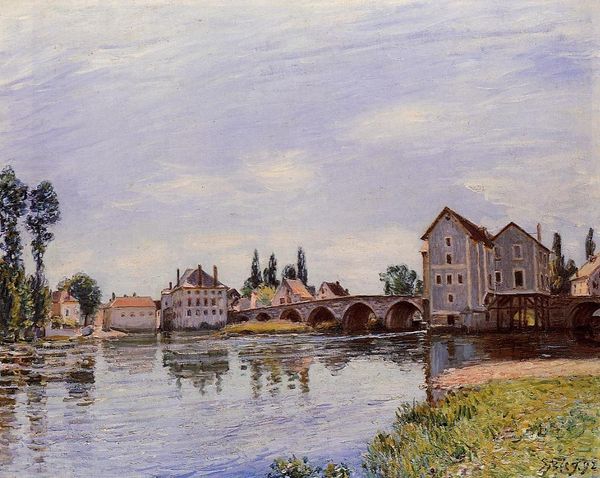
Banks of the Loing towards Moret 1883
0:00
0:00
alfredsisley
Bemberg Foundation (Hôtel d'Assézat), Toulouse, France
Dimensions: 50 x 73 cm
Copyright: Public domain
Curator: We’re standing before Alfred Sisley's "Banks of the Loing towards Moret," painted in 1883. It's a captivating slice of the French countryside, rendered with that characteristic Impressionist touch. Editor: It feels melancholic. All these pale blues and greys...like a watercolor that's bled a little. And those skeletal trees mirroring in the water… quite stark, isn't it? Curator: Stark, but also incredibly evocative. Notice how Sisley uses loose brushstrokes to capture the fleeting effects of light on the water and the surrounding landscape. He wasn't just painting a scene; he was painting a feeling, a moment in time. The Loing was clearly his muse and obsession! Editor: It makes me think about the availability of pigments at the time. These muted colors were perhaps what was readily accessible and relatively inexpensive to grind. It wasn't just about capturing a feeling; it was also about the limitations of the industrial processes supplying him. Were those boats common? What kind of labor was done around the Loing then? I am guessing they might have transported materials such as grains, firewood, sand, or bricks… Curator: A great way to approach this work indeed, you see past the romantic lens! But this work does go beyond labor. It is part of the wave of *en plein air* painting. Remember how revolutionary that was? Imagine lugging your easel and paints outdoors, right to the source of the light. Think of the physicality, how he grappled with the transient light right on the spot. Editor: Of course. The portable paint tube was as disruptive a technology then as digital media is today, letting artists do things at different scales with different production flows. But look at that single figure standing near that building – are they delivering or receiving materials? Or perhaps just an overseer of those who labor to make Sisley’s rural idyll possible? Curator: That figure...I see someone lost in thought, just like Sisley when faced with this motif over and over. The artist has this obsession, to keep recreating the motif and get closer to this emotional impact that the river renders upon his creative spirit. What that small figure represents, to me, is the pensive observer, at the threshold of a place ripe for observing. Editor: Hmm. Maybe. I am still mulling over those colors...reflecting on what kind of impact the production processes for these tubes had for his Impressionistic art, both aesthetically, economically, and even in terms of working conditions. Curator: Well, there's always more than meets the eye, isn't there? Editor: Absolutely. Even in a seemingly simple landscape, you’ll find layers of materiality and social relations influencing what is seen.
Comments
No comments
Be the first to comment and join the conversation on the ultimate creative platform.
